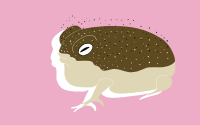28 October 2007The Kansas City StarMarty Ross
When you have an apple tree in your backyard, the fall air isn’t the only thing that’s crisp.
Growing your own apples is a wonderful way to capture the full flavor of fall.
Unfortunately this year is an extraordinarily bad year for fruit. The devastating April freeze literally nipped apples in the bud all across Missouri and Kansas, causing an unprecedented crop failure. But the apple trees themselves were unharmed, and there will be plenty of fruit next year.
So if you plant an apple tree next spring, you’ll be reaping the rewards for years to come. Start investigating your choices with some old-fashioned research in the produce aisles at the grocery store so you’ll be ready for spring planting.
The Kansas City area’s most exciting, ambitious and beautiful apple orchard is just now taking root at Powell Gardens in Kingsville, Mo. The staff is nurturing several hundred young apple trees that will be planted next spring in the new Apple Court, one of the plantings in the Heartland Harvest Garden, a 12-acre ornamental farm garden of astonishing breadth scheduled to open in the fall of 2008.
“This is going to be America’s premier edible garden,” says Alan Branhagen, Powell’s horticulture director. “Everything in it will be fun, tasty and beautiful.”
Branhagen and Barbara Fetchenhier, the gardener in charge of the trees, have been on a crash course in the history, culture and horticulture of apples. In all, 79 apple varieties will be in the Heartland Harvest Garden, Branhagen says.
Fifty varieties will be planted in the Apple Court, which is designed to show off apples just right for every purpose: apples for sauce, pies, butter, cider, jelly and for eating right off the tree.
The trees in the Apple Court will be planted in a spiral, with large apple trees that require the most space on the outside, and columnar apples, growing in a space only 2 1/2 feet wide, at the center. The design brings to mind the riches of a cornucopia.
Apples are one of the easiest and most dependable fruits you can grow. The harvest is delicious and fulfilling, as apple trees produce fruit from a young age and supply memories for a lifetime. Apple trees in our own backyards take us part of the way back to a time, long ago, when the world was not spinning quite so fast and when simple pleasures were still the best.
A gnarled old apple tree, covered with delicate white flowers in spring, captures the shimmering beauty of youth and the magnificent character of age. They’re great climbing trees and handsome landscape specimens. Picnic tables belong under apple trees.
An apple tree or two will soon turn even a brand-new, wind-swept suburban yard into a landscape with some family history behind it.
Kansas City’s climate and soil are great for apples. Depending on the variety you choose, apples will ripen from early summer (Lodi) until late in the fall (Granny Smith). Historic apple varieties, like Chenango Strawberry and Wolf River, are great fun to grow and will also be represented in the Heartland Harvest Garden.
The orchard includes some experiments, too. It will help gardeners decide whether Honeycrisp, developed by the University of Minnesota for cold-climate gardeners, deserves the high praise it has received and is worthy of growing here. Our summer heat may be too much to produce Honeycrisp apples at their best.
“Some of these things we just don’t know yet,” Branhagen says. “If it’s a complete flop, we’ll change it out. The garden will grow — and we will grow with it.”
Fetchenhier, who also grows apples and other fruit in her home garden in Warrensburg, is training many young apples into traditional espalier forms for the Heartland Harvest Garden. The Belgian fence style, in which apple trees are grown in strict ranks with just a few strong branches trained to crisscross each other in a diamond pattern, will mark the corners of the Missouri Star garden near the Apple Court.
Fetchenhier is training some varieties in low, horizontal cordons and others in the shape of multi-tiered chandeliers. They demonstrate an important technique — how to grow fruit in a small space, against a wall or fence — but they are also very beautiful.
No one at Powell Gardens expects backyard gardeners to grow apple trees on this scale or in such quantity, but the Apple Court and the whole Heartland Harvest Garden will be full of ideas to take home. These will be organic apples, managed without chemical pesticides — what you’d want in your own home-grown apples, Fetchenhier says. One of the goals of the Apple Court and Heartland Harvest Garden is to help backyard gardeners learn how be successful organic gardeners.
“There’s so much resistance” to organic gardening, Fetchenhier says, because farmers don’t like to take any more chances than necessary. But sometimes more harm than good is done: Old-timers accustomed to spraying don’t always know how to manage pests without killing the good bugs, too.
“There are going to be blemishes” on the fruit from organically managed trees, Fetchenhier says, but a healthy apple tree will still produce bushels of delicious apples. Blemishes are normal. Perfection is not.
The Apple Court will also be a beautiful display garden. Lots of roses, selected for their flowers and bright red hips, will be planted between the apple trees. Chives, which help deter apple scab, have been incorporated into the design.
The handsome and long-blooming anise hyssop, rows of strawberries and sparkling, silver-leaved mullen, all chosen because they are beneficial companion plants, will be planted among the apples and roses, too.
Louise Riotte’s Carrots Love Tomatoes, a classic book full of recommendations for plants known to perform well together, was an important source, Branhagen and Fetchenhier say.
Fetchenhier expects to start transplanting trees from the temporary nursery into the Apple Court on nice days in February. March is the perfect time for home gardeners to plant young apple trees, she and Branhagen say.
You won’t get fruit on your own new trees for a couple of years, but at this time next year you’ll still be able to experience the pleasure of the first harvest from the new Apple Court at Powell Gardens. It will be a real milestone and an eye-opener, especially for young gardeners who have never had the pleasure of biting into a truly fresh, homegrown apple on a bright fall day.
•Missouri and Kansas Extension Web sites also provide a great deal of information about apples. Here are two: horticulture.missouri. edu/apple/welcome.htm and www.oznet.ksu.edu. Click on publications and search for apple.
•Stark Bros. sells a large selection of fruit trees of all kinds, including lots of excellent apples. Go to starkbros.com or call 800-325-4180. Shipping begins in mid-February.
•Jung Seed Co. sells dwarf, semi-dwarf and standard apples. Go to jungseed.com or call 800-297-3123. Shipping begins in mid March.
Apple trees are grafted onto various kinds of root stock to control the mature size of the tree.
Dwarf apples grow to about 10 feet tall and produce two to six bushels of fruit. Semi-dwarf apples grow up to about 15 feet tall and yield eight or more bushels of fruit.
ARKANSAS BLACK: A delicious old apple variety introduced in the 19th century. Arkansas Black is a very late-ripening apple, deep ruby red, with firm, crisp, juicy fruit. Apples are disease-resistant and can be stored for months.
EMPIRE: A cross between Macintosh and Red Delicious, introduced in New York in 1966. The bright red apples ripen in mid-September and store well. Great for eating right off the tree and for baking.
JONAGOLD: This large apple is a cross between Jonathan and Golden Delicious, introduced in the 1940s and still considered one of the best dessert apples. It has yellow skin, deeply flushed with bright red. Delicious off the tree, in pies and for applesauce. Does not keep well.
JONATHAN: An old-time favorite apple from the 1820s. Jonathan apples are crisp, juicy and sweet. Some people describe the fruit as slightly spicy, a flavor that especially comes through in cider. Ripens in early September and stores well.
SEPTEMBER WONDER FUJI: A blush-colored apple related to Fuji that ripens weeks earlier in the season. Firm, juicy, creamy white fruit. Keeps well.
GRAND GALA: A big, bright-red apple related to Gala but just introduced in 2000. The sweet fruit tastes great off the tree and stores well.






